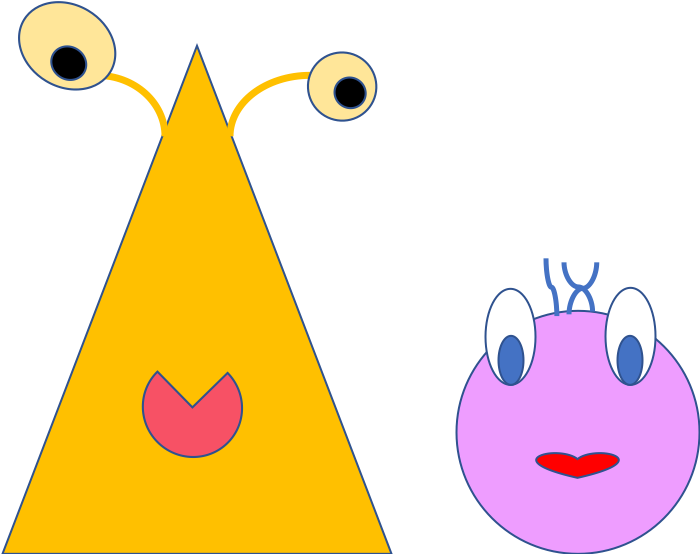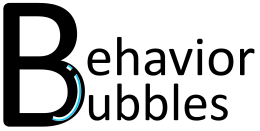Why teach tacts?
Tacts (a.k.a. labels) are a way to build up a child’s vocabulary. Teaching more tacts allows a child to learn more words to be able to better express themselves. Thinking about our day to day life, we use a combination of nouns, prepositions, adjectives, adverbs, actions (and more) whilst communicating with our friends, family and colleagues. By having a strong tact repertoire (i.e. strong word bank), it would be easier for the child to learn how to use known tacts to request (i.e. mand) for the item or use the tact in conversation (i.e. intraverbals) in future. Additionally, by teaching a child to tact, this provides valuable information to their cargivers should the child be able to tact internal events that cannot be seen (i.e. pain, happy, hungry, etc.).
To better understand the importance of tacts, let’s do a little exercise.
Exercise

Let’s look at the images of the 2 monsters above and imagine that you do not know colors and shapes. Should you not know what these monsters are called, how would you describe them?
Should I teach you the name of these monsters as ‘Tim’ and ‘Joe’, it will still be difficult for you to know who is ‘Tim’ and who is ‘Joe’. Now let’s say that I teach you what colors and what shapes are. Would you be able to better describe what you see? Now, you would be able to describe ‘Tim is taller than Joe. He is triangular in shape and orange in color’ and ‘Joe as the circular pink being with 3 strands of hair beside Tim.’ and easily refer to them as ‘Tim’ and ‘Joe’ respectively in future.
Should I ask you to feed the monsters, would you be able to provide them with the correct food? Should I tact ‘Tim’ as a carnivore and ‘Joe’ as an herbivore, and passed you a carrot, would you be able to better tell who to feed the carrot to?
Through this activity, we can see that apart from learning more complex nouns (i.e. carnivore, herbivore), learning the tacts of simple nouns such as shapes and colors can also aid a learner in future.
Some Examples of Tacting Programs:
Functional nouns (i.e. water, cookie, cup, pencil, etc.).
Actions (i.e. eating, drinking, clapping, etc.)
Places (i.e. playground, hospital, etc).
Adjectives (i.e. big, small, dirty, clean, etc.)
Adverbs (i.e. slowly, quickly, carefully, etc.)
Feelings (i.e. happy, sad, etc.)
Prepositions (i.e. on, under, between, in front, etc.)
I hope you have learnt from from this post! To learn more about what a tact is, click here. To learn more about what verbal operants are, click here.
Happy teaching!


